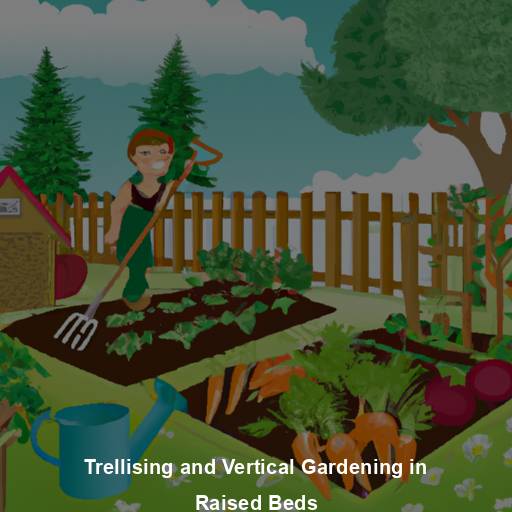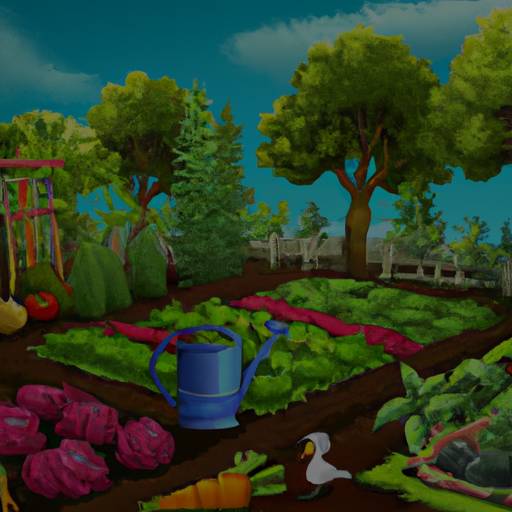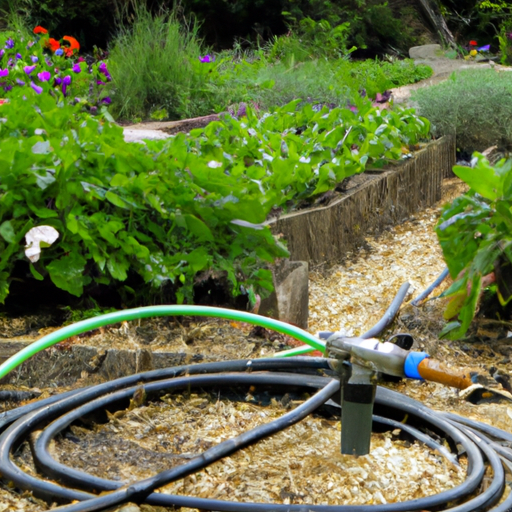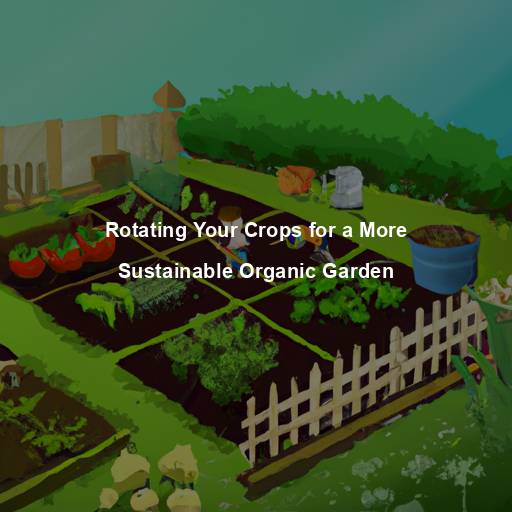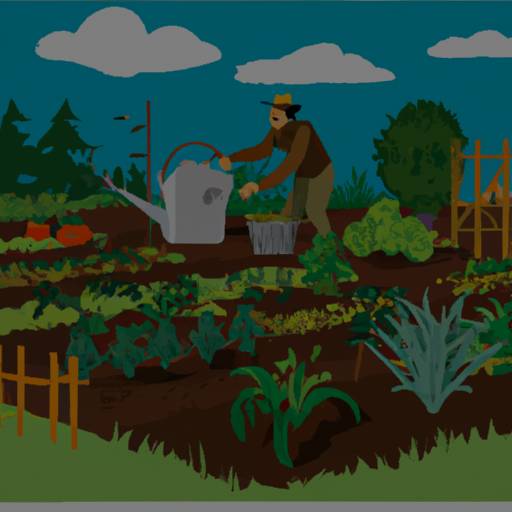Are you looking to maximize your garden space and increase your yield? Trellising and vertical gardening in raised beds may be the solution for you.
As a Master Gardener, I have seen firsthand how trellises and vertical structures can transform a small garden into a productive oasis.
Trellising involves using stakes or poles to support plants as they grow vertically. This technique is particularly useful for vining crops like cucumbers, peas, and beans.
Vertical gardening takes things one step further by training plants to grow up walls or other structures. Both methods allow you to make the most of limited space while also providing numerous benefits such as increased air circulation, better pest control, and easier harvesting.
In this article, we will explore the different types of trellises and vertical structures that work well with raised beds and provide tips on how to implement them effectively in your own garden.
Benefits Of Trellising And Vertical Gardening
As a Master Gardener, I highly recommend trellising and vertical gardening in raised beds. These techniques offer numerous advantages for both novice and experienced gardeners alike.
One of the primary benefits is that they maximize space utilization, allowing you to grow more plants in smaller areas. This can be especially helpful if you have limited yard space or want to create a compact vegetable garden on your balcony or patio.
Additionally, trellising and vertical gardening can help increase plant productivity by providing support for climbing plants like cucumbers, tomatoes, and peas. By training these plants to grow upward instead of sprawling along the ground, you’ll not only save valuable real estate but also improve air circulation around your crops which reduces disease pressure.
Finally, trellises and vertical gardens add visual interest to any landscape design while keeping fruits and vegetables off the ground where they are less likely to rot or become infested with pests. Whether you’re growing flowers or edibles, incorporating these structures into your raised bed garden is an excellent way to enhance both form and function.
Types Of Trellises For Raised Beds
When it comes to trellising in raised beds, there are a variety of DIY trellis designs that can provide support for your plants while adding an aesthetically pleasing element to your garden.
One common type is the teepee-style trellis, which involves using long bamboo poles or wooden stakes arranged in a cone shape and secured at the top with twine or wire.
Another popular option is the lattice-style trellis, which uses a grid pattern made from wood slats or PVC pipes.
Whichever design you choose, it’s important to consider optimal vine placement so that your plants receive enough sunlight and don’t become overcrowded on the trellis.
With the right technique and attention to detail, your raised bed garden can flourish with beautiful climbing vegetables such as tomatoes, cucumbers, beans, and more.
Vertical Structures For Raised Bed Gardening
Now that we’ve explored the different types of trellises for raised beds, let’s take a look at vertical structures.
One of the advantages of vertical gardening is that it allows you to make use of limited space while still growing an abundance of crops.
With creative designs and careful materials selection, you can create a stunning garden that not only looks beautiful but also maximizes your available space.
There are many options when it comes to choosing materials, including wood, metal or PVC pipes.
Keep in mind that each material has its own strengths and weaknesses when it comes to durability, weight limits and weather resistance.
When selecting materials, consider the specific needs of your plants as well as the climate in which they will be grown.
By taking these factors into account, you’ll ensure that your vertical garden thrives for years to come without any issues!
Tips For Implementing Trellising And Vertical Gardening
Alrighty, let’s talk tips for implementing trellising and vertical gardening in your raised beds. First off, don’t be intimidated by the idea of training plants vertically – it’s a great way to maximize space and yield a bountiful harvest.
To get started, consider some DIY trellis ideas such as using bamboo poles or cattle panels to support climbing plants like tomatoes, cucumbers, and beans. Here are five additional pointers to keep in mind:
– Choose sturdy materials that can withstand wind and weight.
– Position your trellises so they receive ample sunlight and won’t obstruct other plants from growing.
– Train your plants early on by gently tying them to the trellis with garden twine or Velcro tape.
– Prune excess foliage to promote healthy growth along the main stem.
– Don’t forget to water regularly – vertical gardens often require more frequent watering.
By following these guidelines, you’ll be well on your way to enjoying a thriving vertical garden!
Remember, this method may take some extra effort upfront but the rewards are worth it. Happy gardening!
Maximizing Yield And Space In Raised Bed Gardens
As a Master Gardener, one of the keys to maximizing yield and space in raised bed gardens is using interplanting strategies. By planting complementary crops together, you can increase your overall harvest while making the most of limited garden real estate.
Companion planting techniques are also effective, as certain plants work well together to improve soil health and deter pests. For example, planting marigolds alongside vegetables like tomatoes or peppers can help repel harmful insects and boost crop yields.
Remember to consider plant spacing carefully when interplanting and companion planting to ensure each species has enough room to grow properly. With these methods, you’ll be able to make the most of your raised beds for a bountiful harvest all season long without overcrowding your plants or sacrificing quality.
Frequently Asked Questions
Can Trellising And Vertical Gardening Be Done In All Types Of Raised Beds?
When it comes to garden design, choosing the right type of raised bed is crucial.
Soil preparation should also be taken into consideration to ensure that plants thrive and produce a bountiful harvest.
As a Master Gardener, I would recommend considering factors such as drainage, size, and material when selecting a raised bed for your garden.
However, whether or not trellising and vertical gardening can be done in all types of raised beds depends on various factors such as the height of the bed and its stability.
It’s important to do proper research before deciding which type of raised bed is best suited for your specific gardening needs.
What Types Of Plants Are Best Suited For Trellising And Vertical Gardening In Raised Beds?
When it comes to selecting plants for trellising and vertical gardening, there are a few key factors to consider.
Vining vegetables like tomatoes, cucumbers, and beans are excellent choices for these types of setups since they naturally climb and benefit from the added support.
Climbing flowers such as morning glories or sweet peas can also thrive in raised beds with trellises or supports.
However, it’s important to ensure that your chosen plant has enough space and resources to grow vertically without overcrowding neighboring plants.
As a Master Gardener, I always recommend doing thorough research on each specific variety before incorporating them into your garden design.
Can Trellising And Vertical Gardening Be Done In Raised Beds With Limited Sunlight?
When considering limited sunlight in your garden, it’s important to remember the benefits of trellising and vertical gardening.
While these techniques are often associated with larger gardens or open spaces, they can be just as effective in raised beds with less sun exposure.
Creative trellis designs can maximize the use of available light while also adding visual interest to your garden space.
Additionally, trellising encourages healthy growth by providing support for vining plants and reducing soil-borne diseases.
Don’t let a lack of full sun discourage you from exploring the possibilities of trellising and vertical gardening in any size garden!
How Do I Maintain And Prune Plants On Trellises In Raised Beds?
As a Master Gardener, I understand the importance of maintaining and pruning plants on trellises in raised beds. Pruning techniques are essential to ensure proper growth and development of your plants.
Do you know which training methods work best for your specific plant species? It’s important to research and learn about each plant’s individual needs. For example, some plants require more aggressive pruning than others in order to thrive.
Additionally, it’s crucial to keep an eye out for any signs of disease or pests that may affect your plants’ health. By regularly maintaining and pruning your trellised plants, you can ensure a healthy and thriving garden year-round.
Are There Any Safety Concerns To Consider When Implementing Trellising And Vertical Gardening In Raised Beds?
When it comes to implementing trellising and vertical gardening in raised beds, there are some important safety considerations to keep in mind.
Firstly, ensure that your equipment is sturdy and secure – this means using high-quality materials for your trellises or supports, as well as anchoring them firmly into the ground.
Additionally, be mindful of any potential hazards such as sharp edges or exposed wires, especially if you have children or pets who may come into contact with the structures.
By taking these precautions, you can enjoy all the benefits of trellising and vertical gardening while minimizing any risks to yourself and others.
Conclusion
In conclusion, trellising and vertical gardening in raised beds can be a wonderful way to maximize space and increase yields. While not all types of raised beds may be suitable for these methods, many are adaptable with some creativity and planning.
Plants such as tomatoes, cucumbers, pole beans, and squash are excellent choices for trellising or vertical growing. Even in areas with limited sunlight, there are options such as using reflective materials or selecting shade-tolerant plants.
Proper maintenance and pruning techniques will help keep your plants healthy and productive on the trellis. As always, safety is a top concern when implementing any gardening technique, so it’s important to carefully evaluate any potential hazards before beginning your project.
As Master Gardeners, we strive to create beautiful, functional outdoor spaces that bring joy and abundance into our lives. Trellising and vertical gardening in raised beds offer just one more tool in our toolbox for achieving this goal. By harnessing the power of nature and working creatively within our unique environments, we can cultivate thriving gardens that nourish both body and soul.
